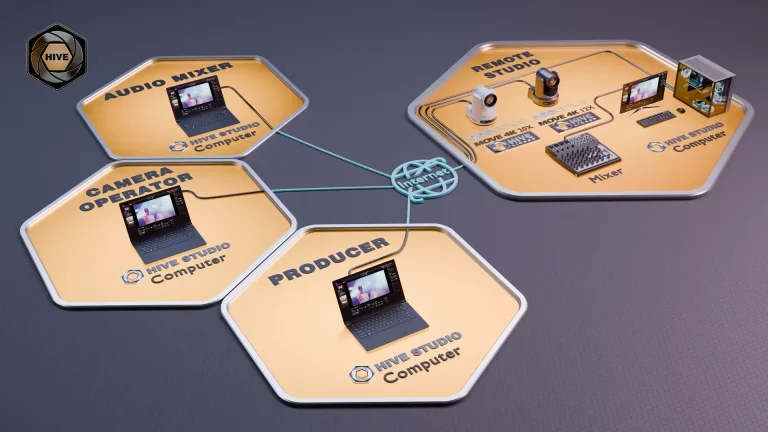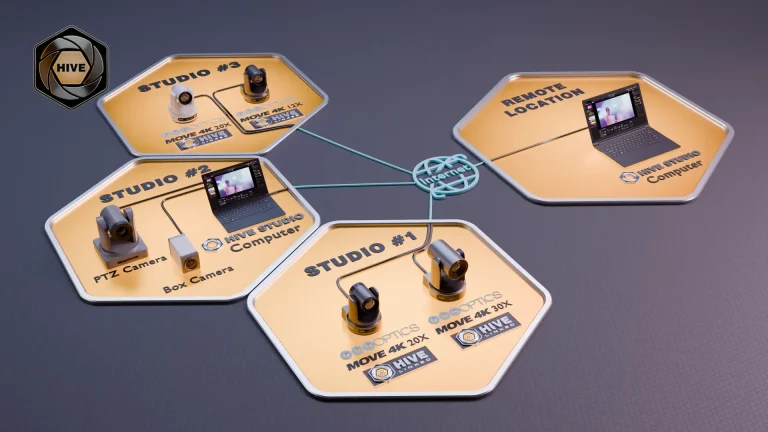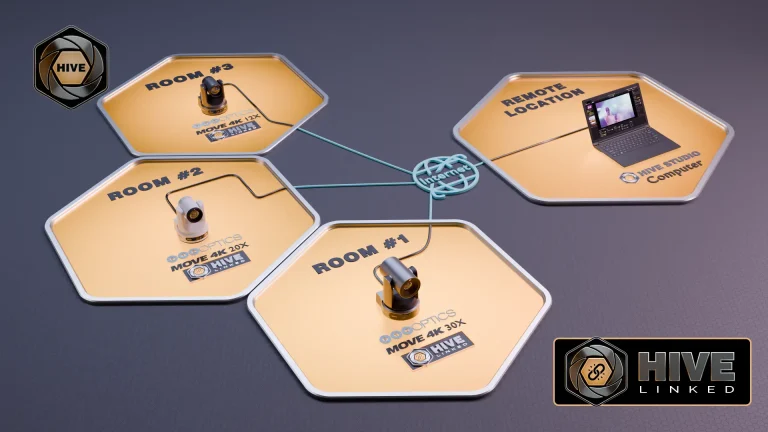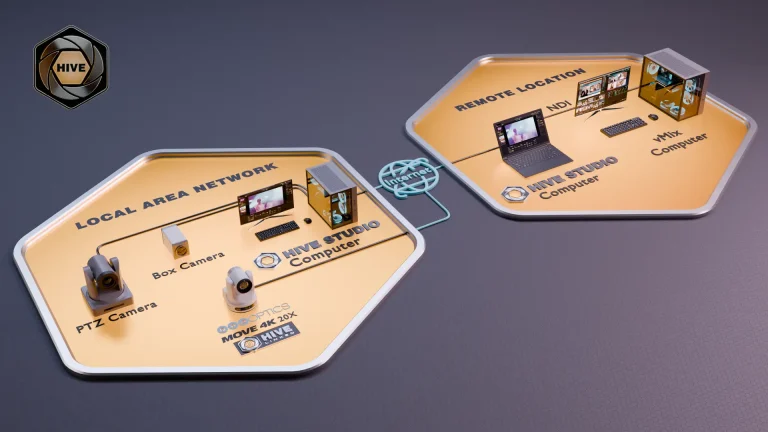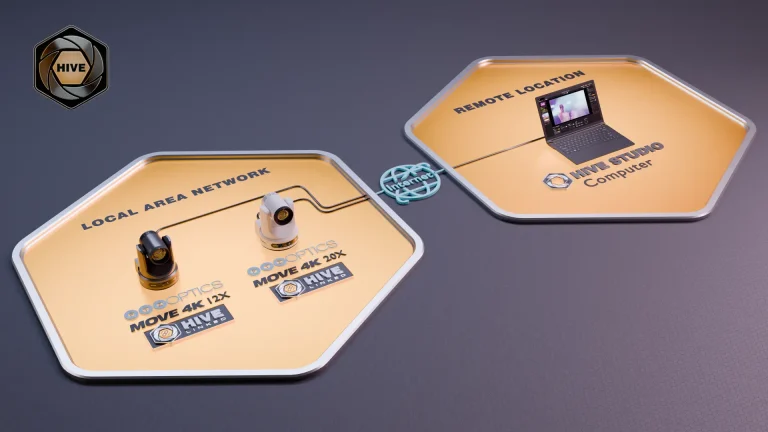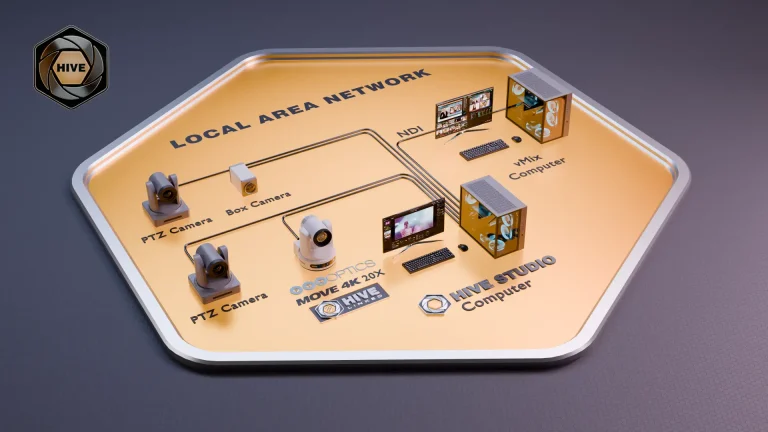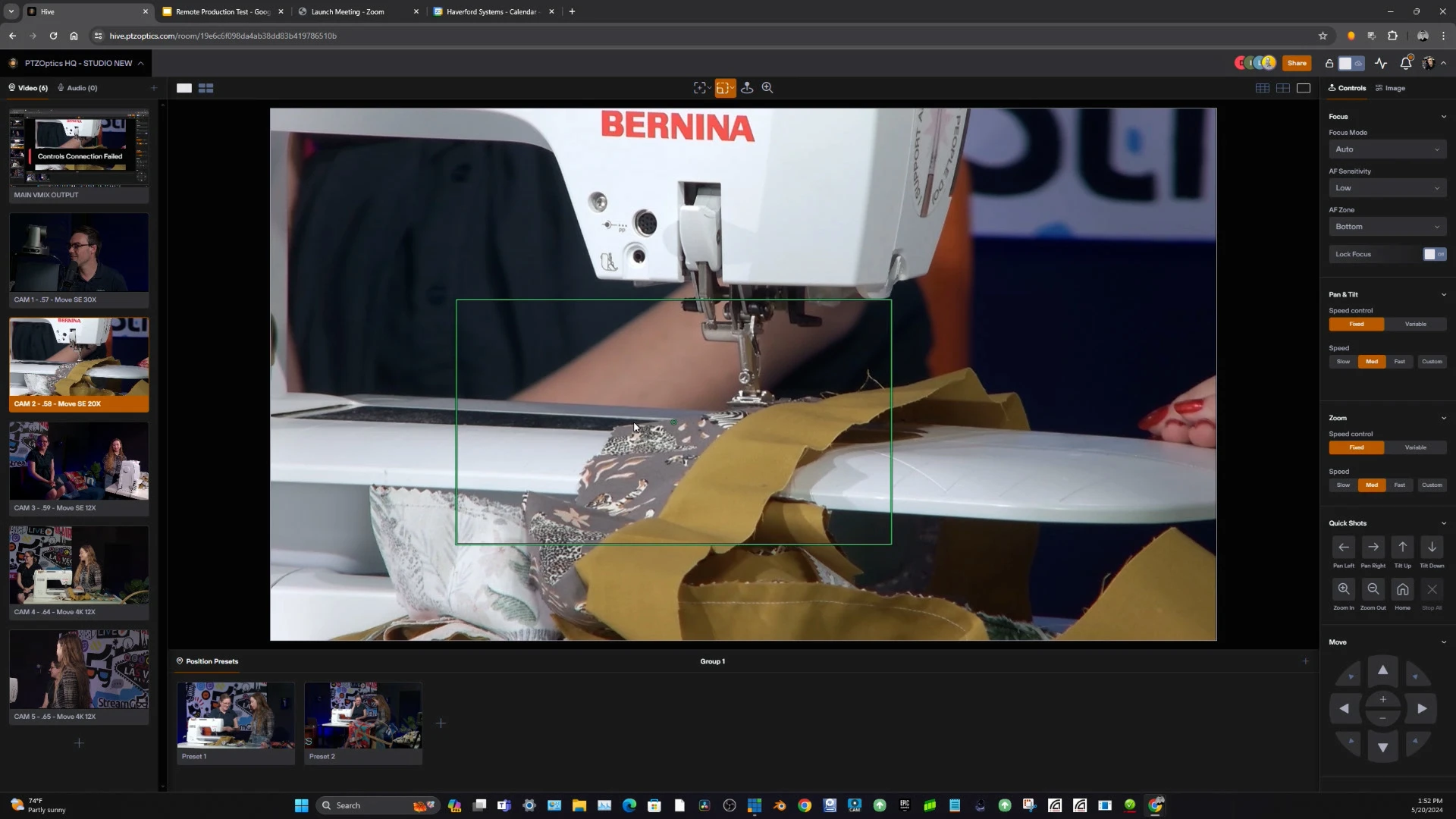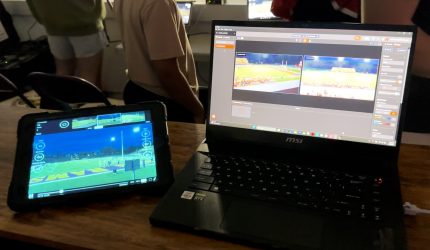A survey by the IABM (International Association of Broadcasting Manufacturers) showed that over 30% of broadcast organizations are adopting remote production technologies.
Get in Touch
-
To More Inquiry
(833) 888-9706
-
To More Inquiry
[email protected]
-
534 Trestle Pl, Downingtown, PA, USA
Remote Production Over IP
As the backbone of modern digital communication, Internet Protocol (IP) plays a critical role in remote production. This page will guide you through the essentials of IP, the distinction between Local Area Networks (LAN) and Wide Area Networks (WAN), and the evolution of remote production technologies from basic remote desktop software to sophisticated production-specific solutions like PTZOptics Hive.

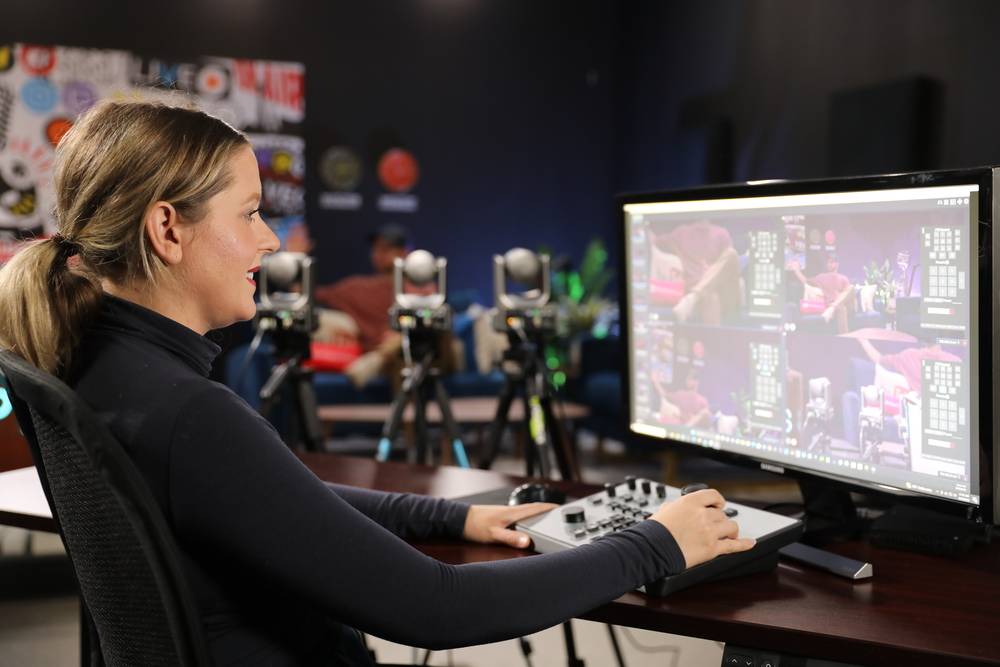
Welcome to InnovateTech Solutions
We thrive on creativity
We invite you to join us on this excitin
Your satisfaction is our priority
We believe in the power of collaboration
Expand your future of video production
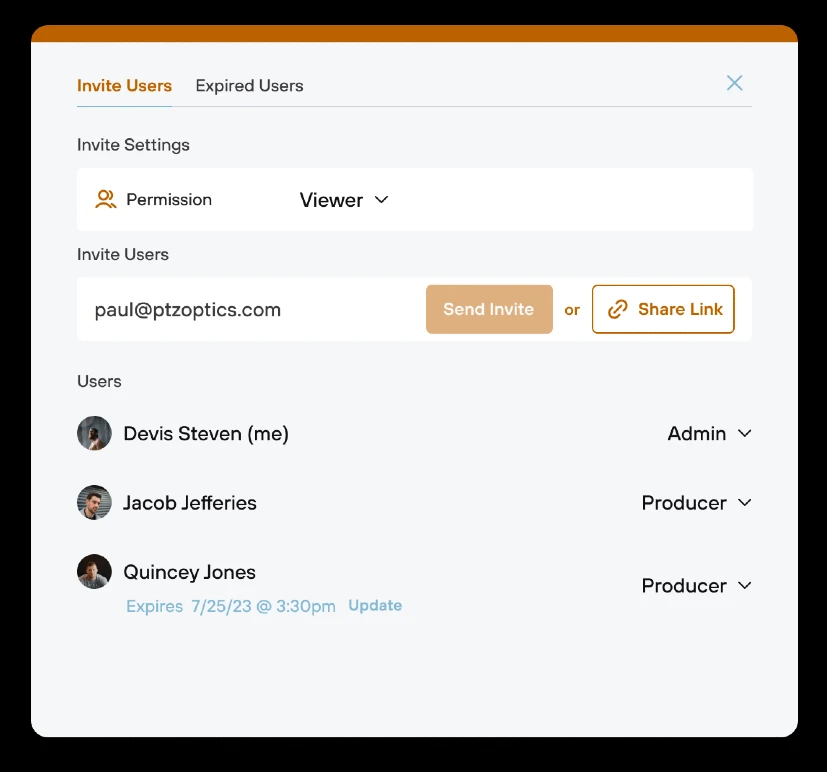
Choose user permission type: Admin, Producer, Viewer.
Send invite via email or by sharing a link.
List of existing users
Admin's can quickly adjust user access.
Admin's can set access that expires for certain users.
Share & Collaborate
Video over IP allows for much easier management of your video productions. Sharing video sources over the network and now over the cloud has never been easier. If you are already using IP video sources, your transition to cloud-based technology can be easy and effective.
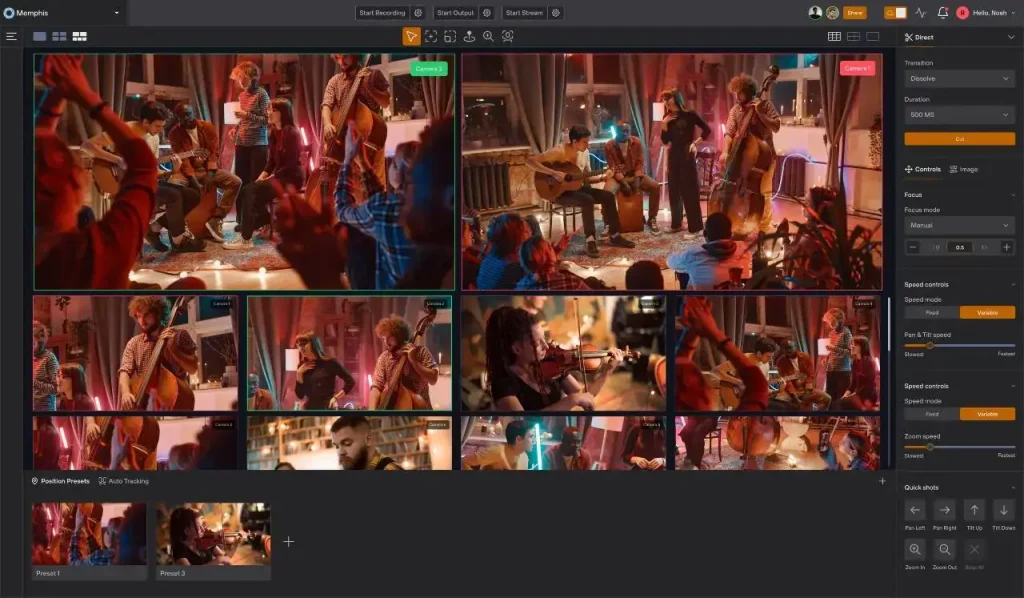
Studio select dropdown
Multi-view select options
Live-switching preview
Live-switching output
Live-switching controls
Image and control setting for selected source.
Camera Movement Tools
Recording/Streaming/Outputsettings
PTZ Camera presets
Share button to invite others
Your IP video workflow now connected to the cloud
Hive allows you to connect video sources on your network to the cloud and then bridge them with NDI to any location you need. This high quality NDI compatible video production tool is used for collaboration with IP video sources available in the Studio.
Studio select dropdown
Multi-view select options
Camera Select
Click-to-Track selection box
Live-switching controls
Image and control setting for selected source.
Camera Movement Tools
Recording/Streaming/Outputsettings
PTZ Camera presets
Share button for inviting others
Others in your studio
Remote production offers the flexibility to manage video from any location, combining the convenience of working from home with the power of advanced technology like NDI, PTZ cameras and cloud recording.
Explore the Possibilities
Our AV experts are here to help every step of the way — even if you’re not quite sure where to start.
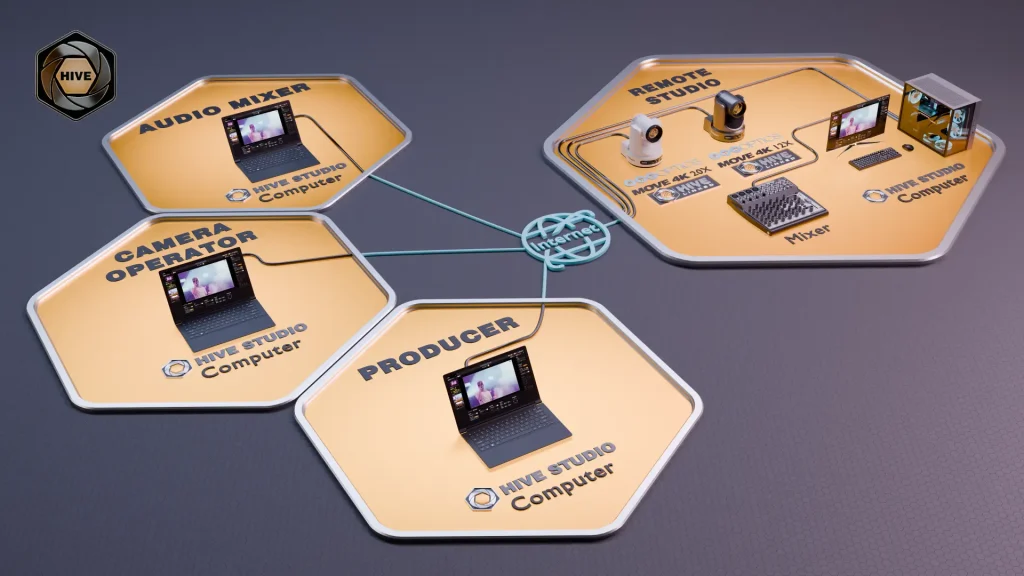
Remote Production Over IP
The shift towards Remote Production Over IP is transforming how production companies operate. This method supports a distributed production model, where elements of the production process are managed across various locations, yet operate under a unified control system. The remote production solution harnesses the power of IP technology to ensure robust, secure, and high-quality transmission of video feeds. This strategic approach not only streamlines operations but also enhances the flexibility and scalability of production resources, enabling broadcasters to effectively meet the dynamic demands of today’s media landscape.
What is Internet Protocol for Remote Production
30
%40
%Devoncroft's Big Broadcast Survey, more than 40% of broadcasting companies have transitioned to or are planning to transition to IP for live production.
50
%50% more efficient, IP technology enhances bandwidth utilization significantly, although exact percentages can vary based on the specific technology and implementation.
Internet Protocol is the principal communications protocol in the digital networking sphere. It is used for relaying datagrams (packets) across network boundaries, enabling the connection of multiple computer networks. IP handles the addressing and routing part of the data transmission, ensuring that packets reach the correct destination.
Local Area Network (LAN)
A LAN connects network devices over a relatively short distance such as within a single building or a campus. LANs are typically used for connecting computers and devices within a confined area to share resources and communicate efficiently. Characteristics: High data transfer speeds and relatively low latency.
Wide Area Network (WAN)
WANs encompass broader geographic areas, such as cities, states, or even countries. They can be used to connect smaller networks, including LANs, over long distances.
Cloud Productions
Cloud-based video production software provides the ideal connection points for remote production enabling your team to collaborate and work from anywhere.
Cloud-based Remote Production Software
PTZOptics Hive represents a paradigm shift in remote production technology. Designed specifically for the media production industry, Hive addresses the unique challenges of remote production.
-
Remote Camera Control
Hive allows operators to manage camera settings, pan, tilt, and zoom remotely without the need for local PCs at each camera site.
-
Video Switching and Recording:
Integrates advanced video switching and recording capabilities directly within the software, streamlining production workflows.
Enhanced Collaboration:
Facilitates real-time collaboration among remote teams, significantly improving operational efficiency and communication.
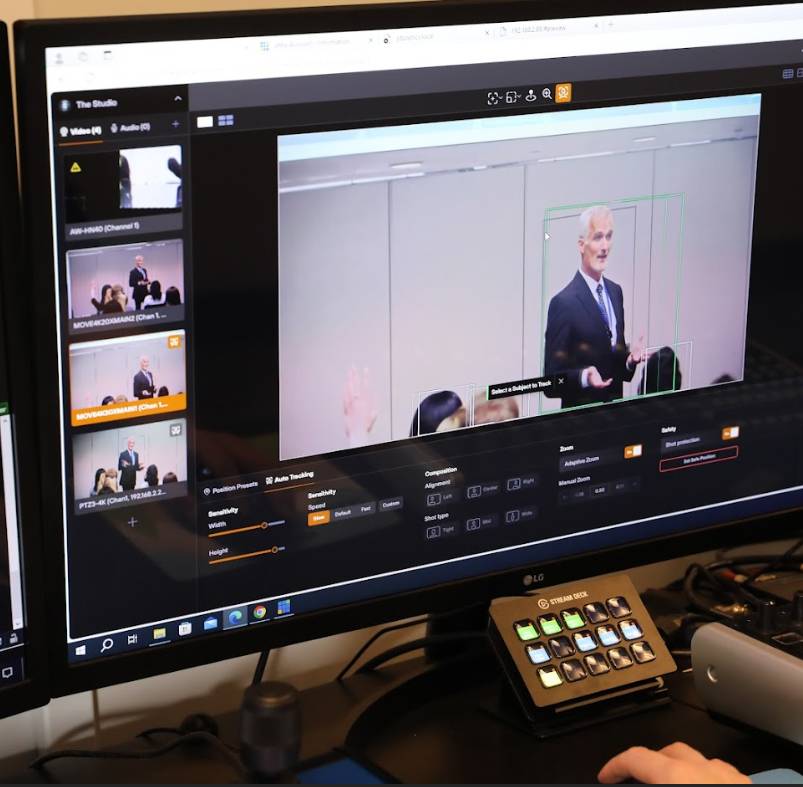
-
-
Advantages Over Traditional Methods
The transition from traditional IP management to sophisticated platforms like PTZOptics Hive illustrates significant advancements in remote production technology. By understanding and utilizing these tools, production teams can achieve higher efficiency, better quality broadcasts, and more dynamic content creation.
-
Purpose-Built for Production:
Unlike generic IT software, Hive is developed with the specific needs of broadcasters and producers in mind, ensuring a smoother, more reliable production experience.
Reduced Hardware Dependency:
Minimizes the need for extensive on-site hardware, reducing setup complexity and potential technical issues.
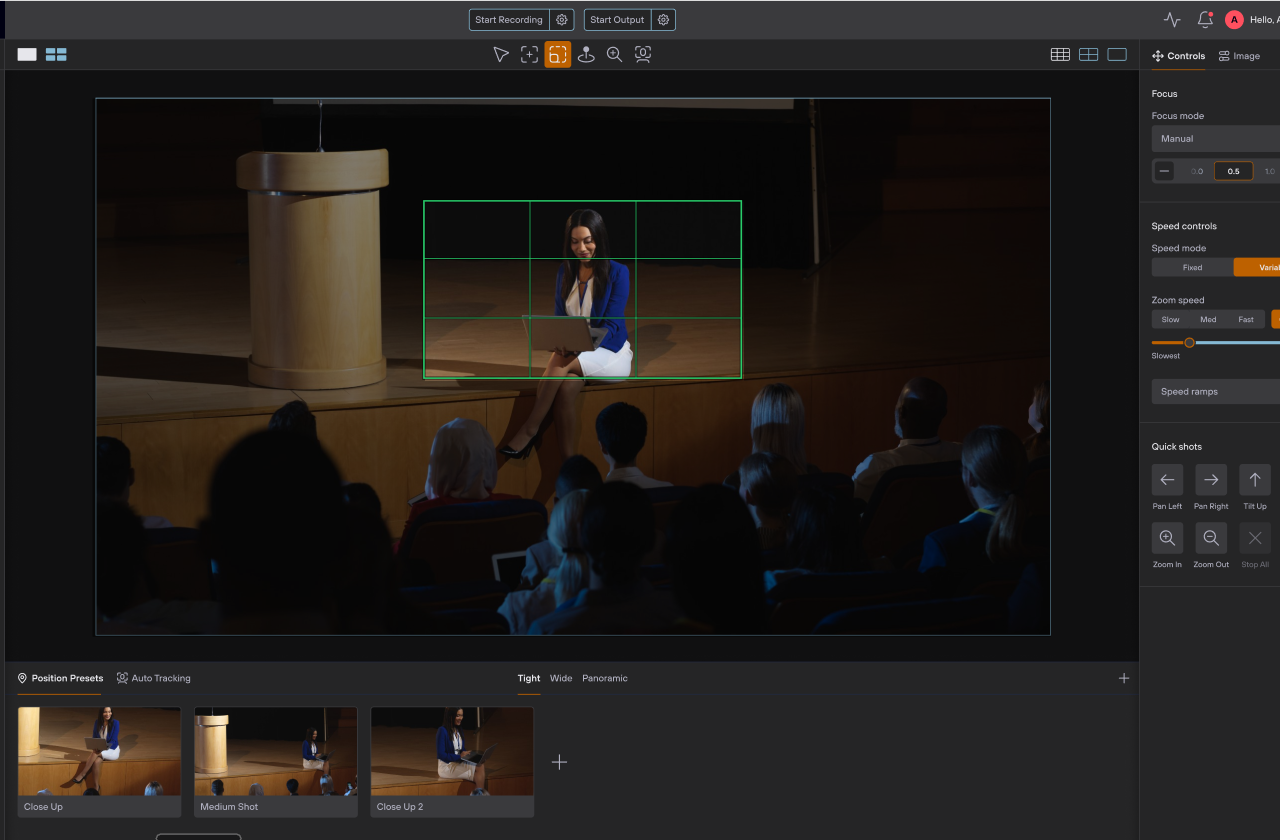
-
Leverage the Cloud for Your Production Workflows
Step
01Setup Requirements
Determine your specific production needs to choose the right technology—either PTZOptics Hive software for comprehensive control or Hive-Linked cameras for simpler setups without the need for a dedicated computer. Ensure you have a reliable internet connection as it is crucial for both methods.
Step
02Remote Camera Control
Gain control of your PTZ cameras from anywhere in the world including camera color correction, image adjustments and full pan, tilt and zoom control.
Step
03Local Switching with Remote Control Integration
If your production involves on-site activities, integrate local video switching handled by a technician with remote camera control. This method combines the reliability of on-site switching with the flexibility of controlling PTZ cameras from remote locations.
Step
04Implement Cloud-Based Solutions
Decide if you want to do your video switching in the cloud, locally on-premise or on the far end via the NDI output with Hive. Using Hive's NDI output you can perform video switching on the far-end using OBS, vMix or other NDI compatible software.
Step
05Evaluate and Enhance Your Workflow
Regularly assess the efficiency and effectiveness of your chosen workflows. Stay updated with the latest advancements in remote production technology to continuously enhance your production quality and operational efficiency.
Remote Production over IP

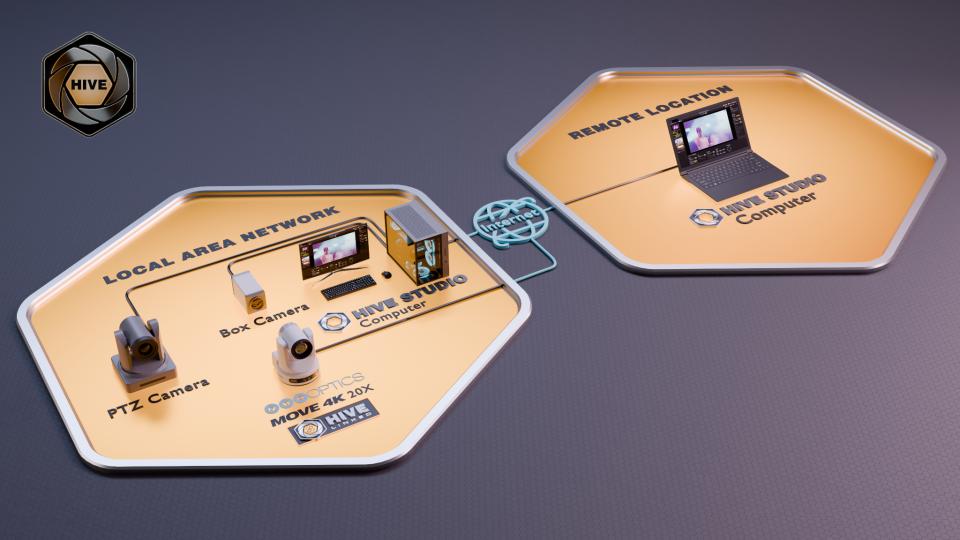
If you are already using
IP Video, the transition is easy
Approximately 40% of broadcasting companies have either transitioned to or are planning to transition to IP for their live production workflows. This reflects the growing recognition of IP's flexibility and efficiency in managing diverse video formats and production scales.
-
%
Average increase in sales for our clients.
-
830
Google and Facebook -certified team.
-
50
%Traditional broadcasting technologies like SDI did not inherently support adaptive bitrate streaming or efficient bandwidth management, often leading to the use of fixed, high bandwidth regardless of the actual necessity. This could be highly inefficient, with systems regularly over-provisioning bandwidth by as much as 50-100%.
-
80
%Prior to the significant uptake of IP technology in live video production, traditional SDI (Serial Digital Interface) systems dominated the industry. These systems were less flexible, and about 70-80% of broadcasting setups were based on these older technologies.
-
10
%Before the adoption of IP-based remote production, remote capabilities were limited and typically involved high costs and complex logistics, with perhaps only about 10-15% of broadcast organizations able to conduct remote operations effectively.
-
50
%With IP technology, adaptive bitrate streaming and other bandwidth-efficient practices can reduce necessary bandwidth usage by up to 50%, adapting dynamically to network conditions.
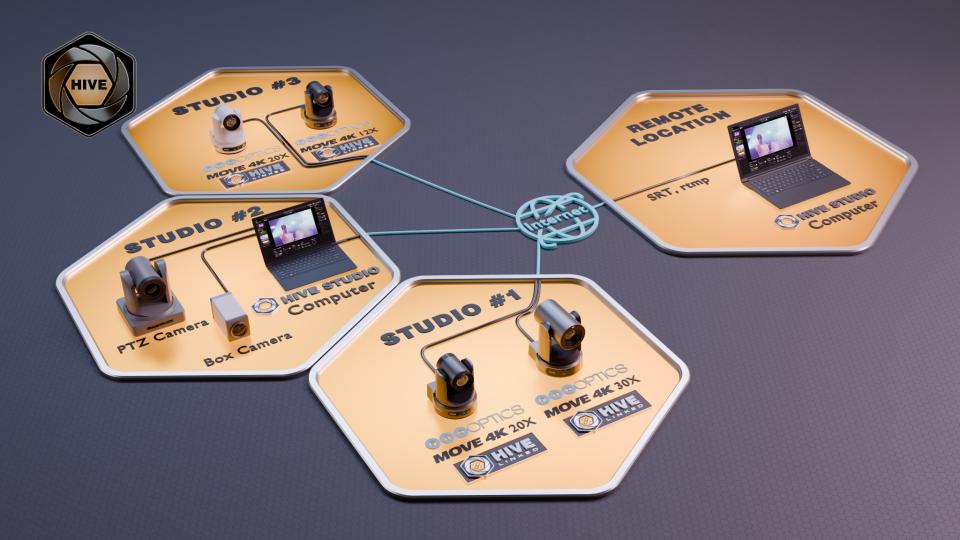
Success in the Field
Check out our blog
Remote Production Over IP represents a significant advancement in the broadcasting and media industry. Utilizing IP (Internet Protocol) technology, this remote production solution enables high-quality live event coverage from distributed locations. The seamless integration of remote and distributed production workflows allows broadcasters to produce and deliver content that meets high standards of quality, without the logistical complexities and costs associated with traditional on-site production setups. By adopting IP remote strategies, production companies can greatly reduce costs while maintaining the integrity and appeal of their live broadcasts.

